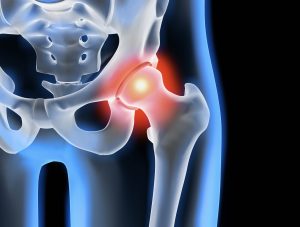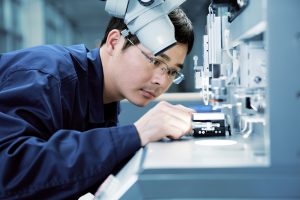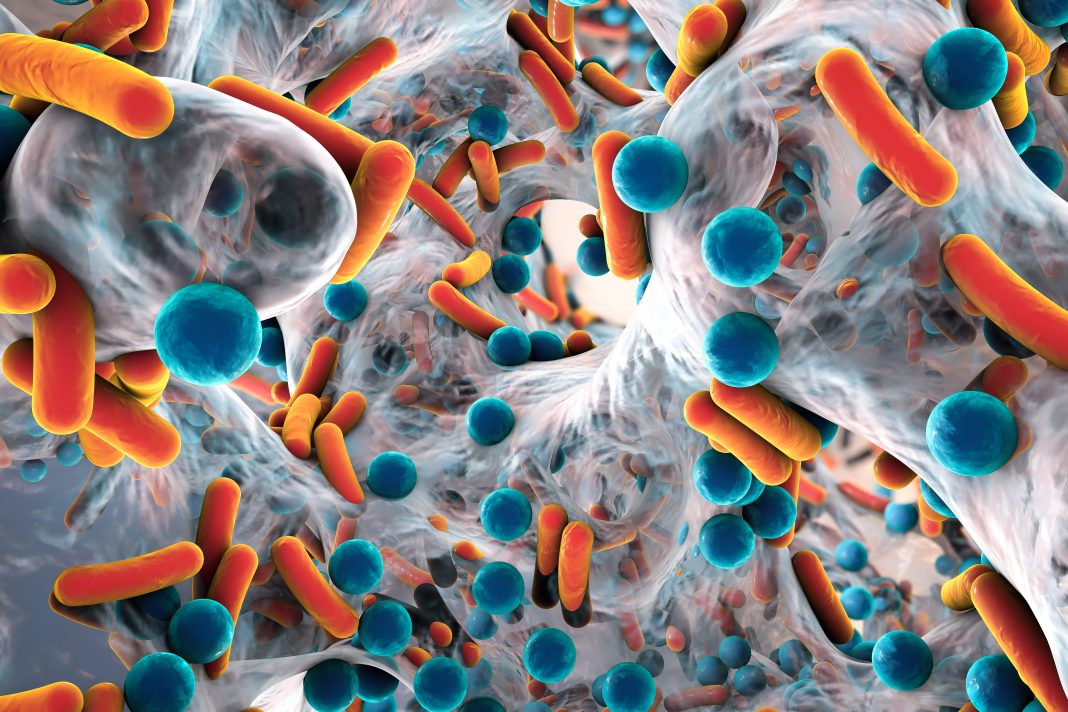Implant-associated infection (IAI) is a common cause of orthopedic implant failures primarily attributing to biofilm formation onto implant surface through bacterial infection. With a rapidly aging global population, more people are expected to suffer from age-related bone impairment, thus heightening demand for implant surgeries. While antibiotics are widely used in a clinical context for bacterial infection, their misuse over the years has given rise to the emergency of antibiotic-resistant bacterial strains, making IAI increasingly difficult to treat.
It is worth noting that no new class of antibiotics has been introduced since 1987. The situation is worsening as bacterial resistance to vancomycin, the last line of defense against resistant bacteria such as methicillin-resistant S. aureus (MRSA), has been sporadically reported in different places. Nanotechnology has shown promises in averting resistant IAIs under in vitro and in vivo laboratory conditions. By manipulating materials’ properties such as size, shape, surface chemistries, and topography in nano scale, materials can be endowed with antimicrobial properties targeting planktonic bacteria and bacterial communities in biofilms. Here, we describe recent progress in antibacterial nanotechnologies, and the challenges ahead.
Nanostructured antibacterial surfaces
The use of surface patterning technology to impart bacteria-killing property onto medical implants is inspired by naturally occurring surfaces such as cicada or dragonfly wings. Studies have shown that these natural occurring surfaces have antimicrobial functions that could have been obtained via evolution. By fabricating a surface geometry with a high aspect ratio through the form of nanopillars, nanotubes, or nanowires, it is possible to replicate the antimicrobial ability similar to those natural occurring surfaces.
While consensus on the exact mechanism of these surfaces has not been achieved, scientists have hypothesized that the antimicrobial mechanism is due to the nanoarchitecture stretching the bacteria cell membrane beyond its elasticity thus rupturing and ultimately killing it. Being purely mechanical in nature, it will be much more difficult for bacteria to develop resistance against these surfaces.
Elena Ivanova, PhD, distinguished professor, and Denver Linklater, PhD, postdoctoral fellow, both from the RMIT University and together with their research team, have been investigating nanostructured topographies and recently conducted a study on antimicrobial properties of sub-100-nm scale patterned polymers fabricated using scalable industrial processes. The team has managed to demonstrate highly reproducible high aspect ratio nanopatterns on a large scale (10s of cm).
Commenting on the major usefulness of this technology, Ivanova says, “The main advantage of this technology is that it may also be upscaled for the manufacturing process using, for example, a roll-to-roll process that can be applied to produce a continuous nanostructured antibacterial film.”

She adds that nanostructured surface can be more robust when compared to other solutions such as coatings which can eventually detach from the surface. The risk of resistance development is also low due to the continuous antimicrobial action of the surface.
It has been suggested that bactericidal efficiency of the surface can be dependent by the spacing and size of the nanostructures and further optimization could increase the range of bactericidal effects. The performance of nanostructured surfaces in killing bacteria can be further enhanced with additive components such as nanoparticles and chemical biocidal agents.
Antimicrobial nanomaterials
Nanomaterials have tunable physico-chemical properties that allow for maximized potential for antimicrobial and biofilm penetration capabilities. They can come in many representative classes which include metal nanoparticles, polymers, liposomes, or nanoemulsions. At the University of Massachusetts, researchers led by Vincent Rotello, PhD, distinguished professor, have been working on a range of nanomaterial-based therapeutics (nanoparticles and drug delivery systems) that possess inherent antimicrobial activity, allowing effective membrane disruption to kill bacteria.
Plant-derived essential oils have been found to disrupt bacterial membrane integrity and induce cell death due to leakage of cellular contents. More recently, Rotello and his team incorporated antimicrobial essential oils with polymeric carriers to create nanoemulsions to effectively eliminate Gram-negative and Gram-positive bacteria colonies. Moreover, the team also conducted coculture model experiments of the nanoemulsions along with bacteria and fibroblast cells. Selective killing of bacteria was observed while retaining fibroblast viability which indicates future potential for this platform to be used to treat bacterial infections safely without damaging our own cells.
“The extent and speed of developing drug resistance mechanisms is a huge challenge in addressing bacterial resistance. While nanomaterial-based strategies currently offer promising solutions for this urgent problem, there are still hurdles to be overcome for the clinical use of antimicrobial nanomaterials. Most studies have been conducted using in vitro models, hence, efficacy in vivo and in humans still needs to be established. Systemic biosafety and long-term effects of nanoparticles on the body are still among the major limitations to clinical translation,” says Jessa Makabenta, a graduate student from Rotello’s lab.
Currently, Rotello is working with Robin Patel, MD, director of the Mayo Clinic’s Infectious Diseases Research Laboratory, to introduce their polymeric platforms into hydrogel wound dressings to provide sustained and delivery of antimicrobial nanomaterials to the infected wound areas.
“We are also improving our antimicrobial platforms by engineering polymeric nanoassemblies with biologics, including siRNA and bacteriophages. Finally, we are designing new polymers by adding functional groups that will incorporate stimuli-responsiveness and stealth properties to the nanomaterial required for systemic delivery,” adds Rotello.
Immunomodulatory nanomaterials
Nanotechnologies that can modulate the immune system are starting to receive attention for application in areas like antimicrobials. In a recent study, Bing Yue, vice director of the department of orthopedics at Shanghai Jiaotong University School of Medicine, along with his team developed a novel antimicrobial system (LL37@ZIF8-LL3) to address common problems associated with S. aureus-related implant infection.

777
“Myeloid-derived suppressor cells (MDSCs) are considered to play a central role in infection-associated immunosuppression and are therefore thought to be an important target for the immunomodulate within the infection site,” Bing says. The system his team designed uses a nanomaterial ZIF8 to encapsulate an antimicrobial peptide (LL37) plasmid and grafted LL37 to its surface. By transfecting the cells around the infected site with the LL37 gene, this system can produce “factories” to continuously produce LL37 to kill escaped bacteria and intracellular bacteria for an extended period. Adding to that, this system managed to down-regulate the expression of MyD88, ARG1, STAT3/6, and S100A8/A9, which are key genes of MDSCs, greatly improving efficacy of treatment.
“Although we developed a series of immunomodulatory nanomaterials and separately clarified their effectiveness of immunomodulation during infection, large animal experiments or even clinical studies are still lacking, and these immunomodulatory nanomaterials are still far from clinical translation,” Yue adds.
IAIs are expected to rise with increasing numbers of implant-related surgeries and emergence of multidrug resistance species. While the technologies mentioned here are promising, they still face challenges including large-scale manufacturing, effects of nanotechnologies on healthy human cells, and possible evolved bacterial resistance to nanomaterials. Besides developing better antimicrobial nanomaterials, it is also important to study their underlying antimicrobial mechanisms to use them in conjunctions with other tools such as bacteriophages to combat multi-drug resistance bacterial species.
Andy Tay, PhD, is a freelance writer based in Singapore. Brian Chan and Zhuoran Wu are PhD students at the National University of Singapore.


